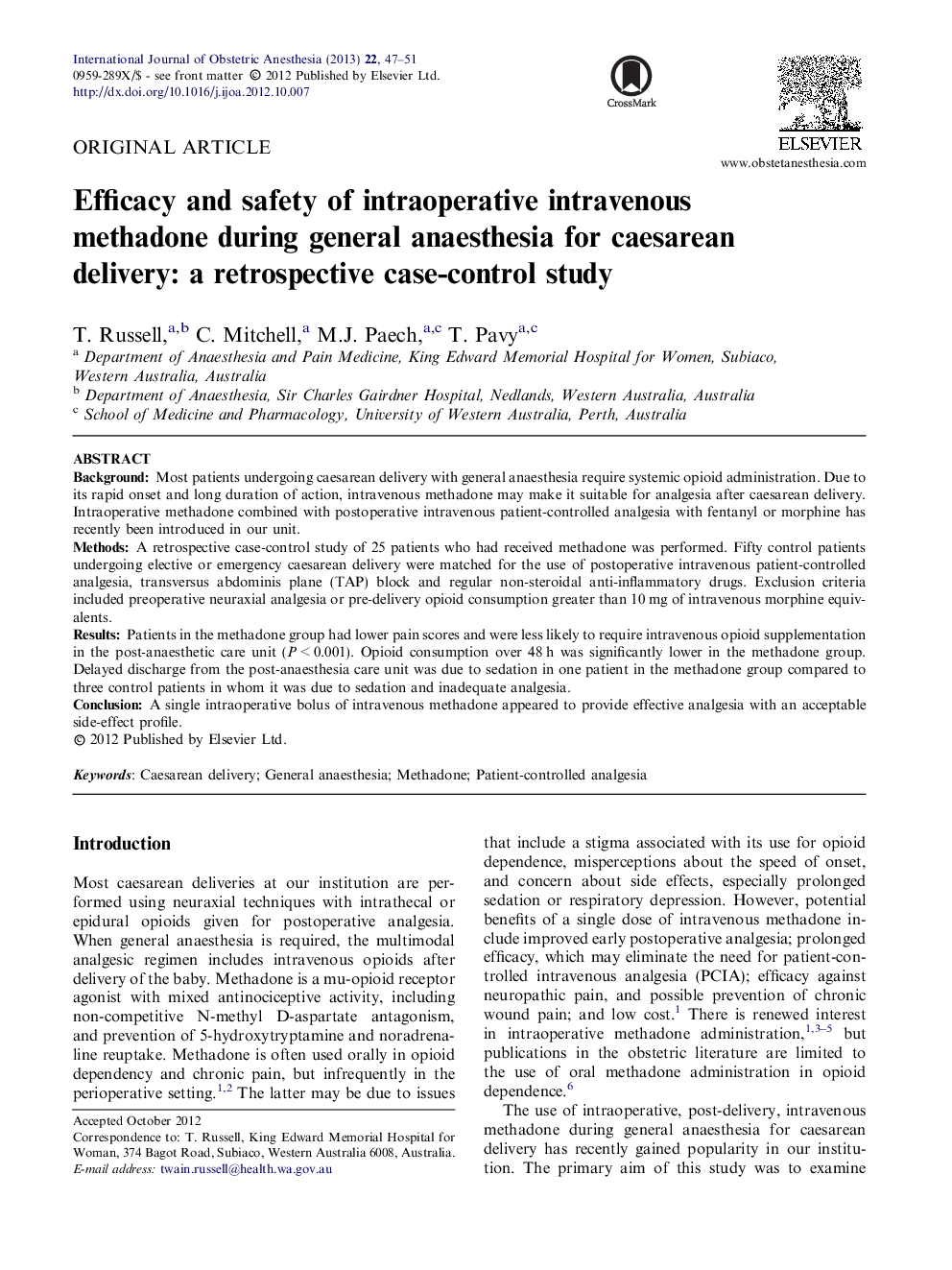| Article ID | Journal | Published Year | Pages | File Type |
|---|---|---|---|---|
| 2757866 | International Journal of Obstetric Anesthesia | 2013 | 5 Pages |
BackgroundMost patients undergoing caesarean delivery with general anaesthesia require systemic opioid administration. Due to its rapid onset and long duration of action, intravenous methadone may make it suitable for analgesia after caesarean delivery. Intraoperative methadone combined with postoperative intravenous patient-controlled analgesia with fentanyl or morphine has recently been introduced in our unit.MethodsA retrospective case-control study of 25 patients who had received methadone was performed. Fifty control patients undergoing elective or emergency caesarean delivery were matched for the use of postoperative intravenous patient-controlled analgesia, transversus abdominis plane (TAP) block and regular non-steroidal anti-inflammatory drugs. Exclusion criteria included preoperative neuraxial analgesia or pre-delivery opioid consumption greater than 10 mg of intravenous morphine equivalents.ResultsPatients in the methadone group had lower pain scores and were less likely to require intravenous opioid supplementation in the post-anaesthetic care unit (P < 0.001). Opioid consumption over 48 h was significantly lower in the methadone group. Delayed discharge from the post-anaesthesia care unit was due to sedation in one patient in the methadone group compared to three control patients in whom it was due to sedation and inadequate analgesia.ConclusionA single intraoperative bolus of intravenous methadone appeared to provide effective analgesia with an acceptable side-effect profile.
